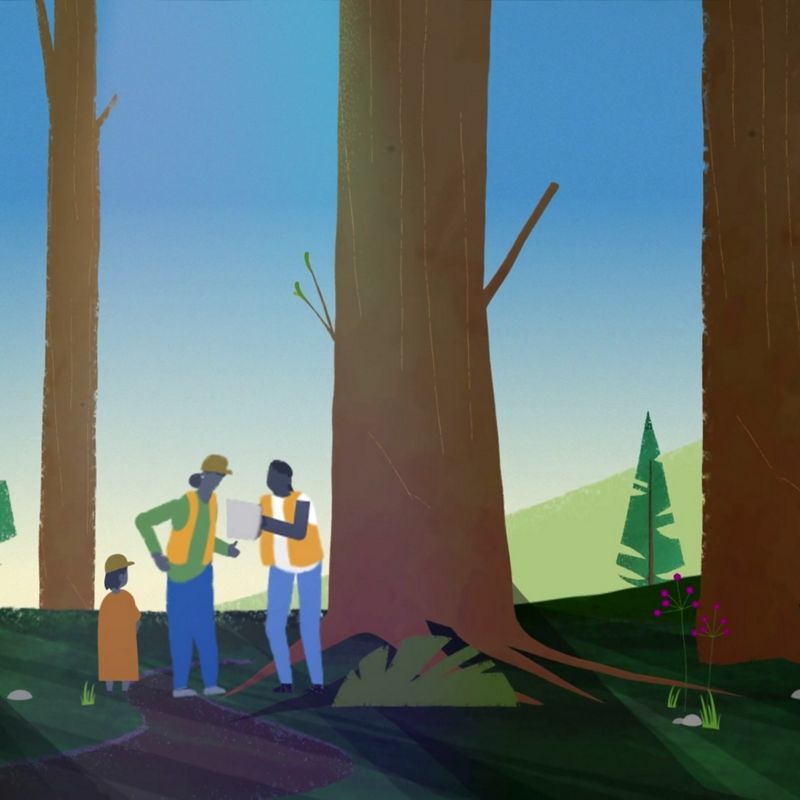
The Value of Managing for Carbon in Forests
Why We Need to Prioritize Climate in Forest Management
To many people, forests across Canada appear to be vast and abundant. For decades, these forests have been managed for timber and employment. But we are missing an opportunity to unlock the living value of forests, rather than strictly focusing on their harvest value. Harvesting forests in the status quo model comes at a cost to biodiversity and to maximizing one of nature’s greatest carbon capture tools. If we do not act now, we may lose our opportunity – possibly permanently – to manage our forests to prioritize climate outcomes and optimize land management for the benefit of biodiversity and people.
The way we value our forests needs to change – and urgently.
By prioritizing different forest management techniques, biodiversity, cultural and economic outcomes could all be vastly improved – all while sequestering carbon to aid in the global fight against the climate crisis.
Research led by Nature United, in collaboration with 16 other institutions including Natural Resources Canada and many universities, shows that, alongside prioritizing conservation of old-growth forests, improving forest management is the key to unlocking the living value of our forests while enabling trees to sequester more carbon.
Quote: ?ikaatius (Tyson Atleo)
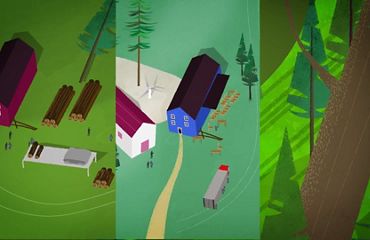
We can improve forest management in partnership with or led by First Nations — to better balance economic and ecological outcomes, ensure resilient communities, meet climate targets, and stabilize biodiversity loss.
Many Indigenous communities across the country are already managing forests in ways that draw from their traditions and values. In many cases, these practices are sequestering more carbon and resulting in improved economic outcomes for communites.
Here are some practices that Indigenous rights holders and other land managers across Canada, including private forest companies, can use to improve forest management outcomes for both nature and people.
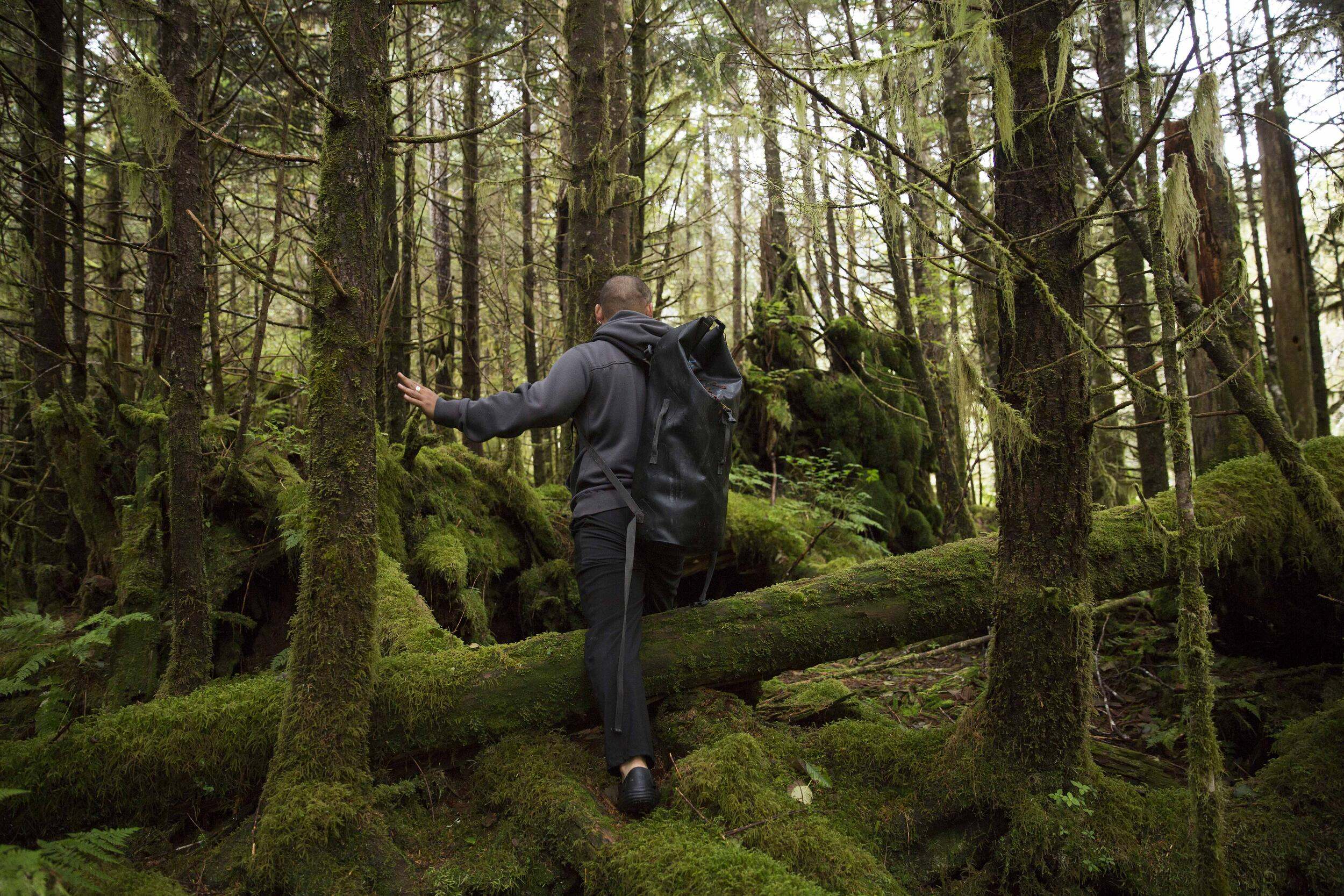
1. Advancing Indigenous-led Forest Management
Our approach shows that, when led by Indigenous communities, improved forest management creates stronger cultural, social, environmental and economic outcomes. Many communities are already taking different values into account, ranging from biodiversity to water resilience, and food security to local economies. Not only does this approach benefit local communities and provinces, but the whole of Canada and the wider world, contributing to the global fight against climate change.
Advancing Indigenous-led forest management cannot happen without strong action from governments. We urgently need to see commitments to support the transition to Indigenous-led improved forest management. This includes upholding Indigenous rights, modernizing forest tenure policies, supporting capacity growth and improving market conditions for value-added forest products and ecosystem services.

2. Protecting Old-Growth Forests
Old-growth forests – which consist of stands of trees older than 140 to 250 years old – have always been at most at risk from being harvested because of their productivity and value. But these ancient forests have the capacity to store vast amounts of carbon, making them a key ally in our fight against climate change. The oldest trees have sequestered immense amounts of carbon in their lifetime, often over centuries. Disturbing these ecosystems, especially through logging, emits these carbon stores into the atmosphere at a scale that is extremely difficult to recapture within a meaningful timeline.
Old-growth forests are also irreplaceable habitats for biodiversity that provide a range of ecosystem benefits including clean water and air. Governments, industries and communities must work together to transition away from old-growth logging and towards protecting and restoring these vital ecosystems. Crucially, this needs to happen on a timeline that reflects the scale and urgency of the climate and biodiversity crises, while also respecting local livelihoods and economies.
Quote: Laura Smith
Managing forests for carbon and biodiversity has many benefits. It can improve the resilience of forests and communities, while continuing to provide sustainable economic opportunities and climate-friendly products to market.
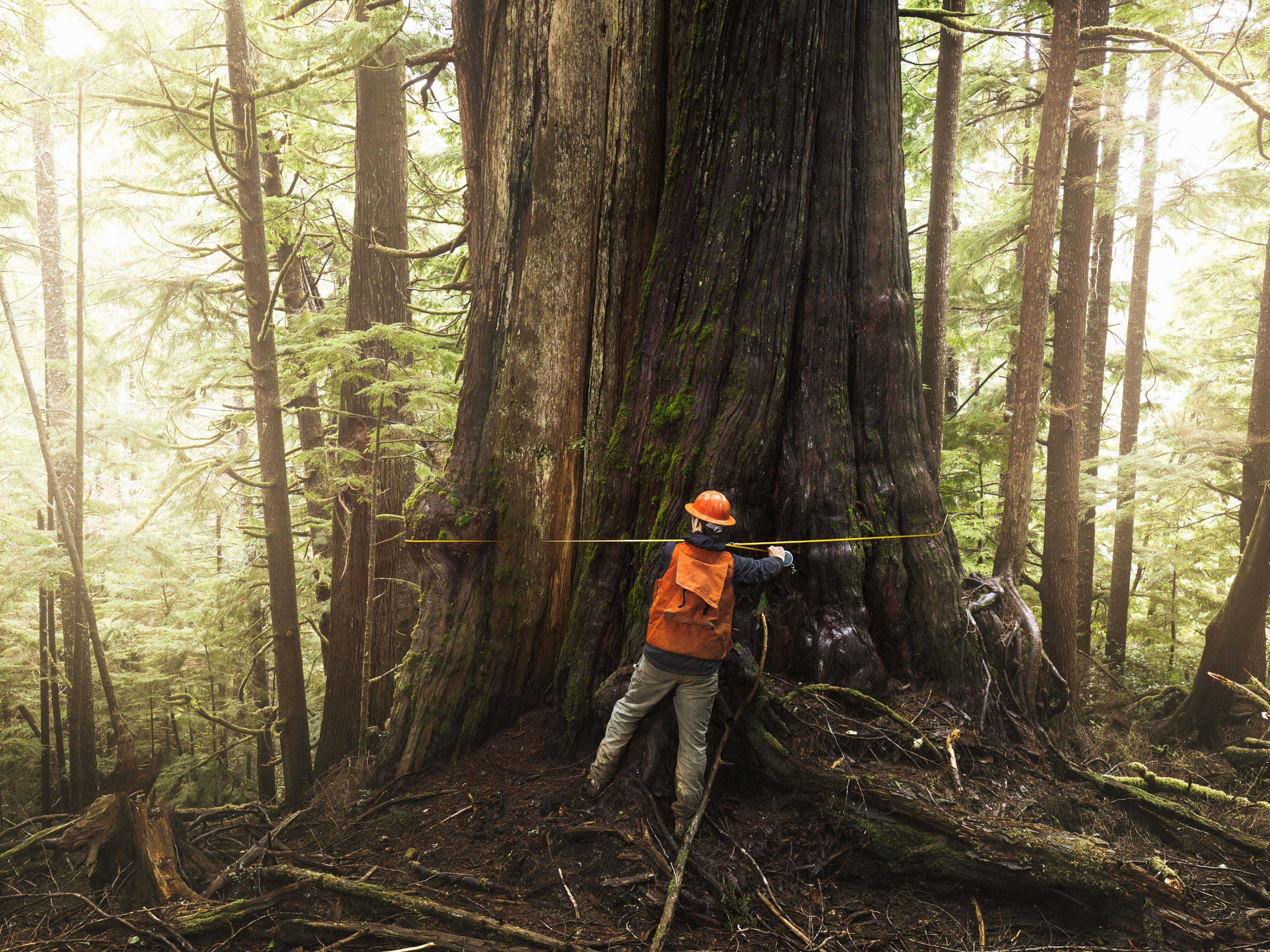
3. Balancing Carbon and Economic Benefits
Studies show that the best way to sequester carbon in forests is by leaving healthy trees standing. In today’s world, this needs to be balanced with local economies and liveihoods, especially in instances when the harvested wood replaces emission intensive materials. In some cases, one way to make logging more sustainable is through extending rotations, which involves lengthening the time between one harvest and the next. This keeps more trees standing – and storing carbon – for longer, with additional benefits for biodiversity and communities.
There is a huge opportunity to explore other practices, including density management and alternative silviculture practices, to manage for carbon capture. And there is no better time to start than right now. Managing forests for carbon is not a one-size-fits-all approach, and the appropriate practices greatly vary depending on the soil and ecology of forests. By rigorously testing methods – and making management changes to prioritize sustainability and carbon capture – we are also future-proofing our forest markets, including the potential to access global markets that are increasingly demanding sustainably sourced goods. We are also creating the opportunity to develop more long-lived wood products that often carry a greater market value.
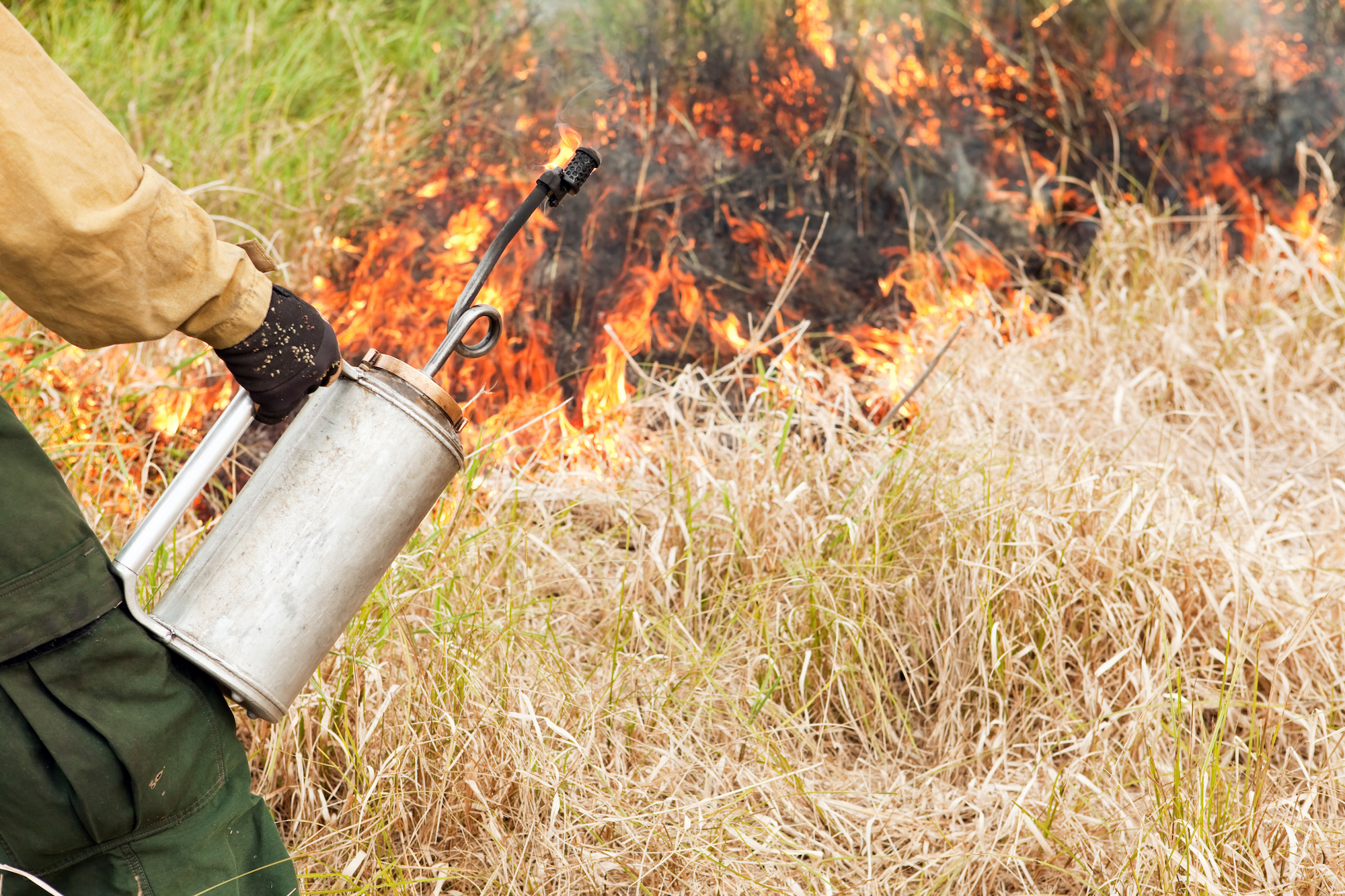
4. Managing Forests to Prevent Wildfires
Wildfires can cause massive emissions of greenhouse gases and the loss of marketable timber. While some forest types depend on fire for regrowth, poor management of wildfire risk can have devastating effects. Warmer temperatures and lower precipitation are making some of Canada’s forests more vulnerable to larger and increasingly intense ‘megafires.'
More research is needed, but existing science tells us that the best way to reduce the risk of catastrophic wildfires is to introduce alternative management practices. These may include promoting fire-retardant deciduous tree stands, and in some cases controlled or prescribed burns, a traditional forest-management technique.
Prescribed burns mimic natural fires and are effective at reducing hazardous fuels and restoring natural ecological conditions. These burns must happen in the right place and at the right time to keep communities safe, preserve habitats, protect natural resources and ensure forests remain healthy and sustainably productive. Spacing and thinning to actively remove forest fuels and provide trees with more room to grow can decrease vulnerability to fire. This enables forest managers to meet a wide range of targets, from clean water and air, wildlife habitat and enhanced carbon sequestration.
Case study: How Managing Forests for Carbon also Protects Salmon
Located on Nu-chah-nulth territory on Vancouver Island’s west coast, Salmon Parks are protected areas that have been designated by the ha’wiih (hereditary leaders) of the Mowachaht/Muchalaht and Nuchatlaht First Nations. Decades of deforestation have eroded the banks and widened the waterways of 24 salmon streams, impeding and preventing salmon from returning and spawning. Using a governance structure based on traditional Nu-chah-nulth law, these Nations are restoring key watersheds central to salmon spawning, a process that includes protecting and regenerating the surrounding forests.
Quote: ARCHIE LITTLE
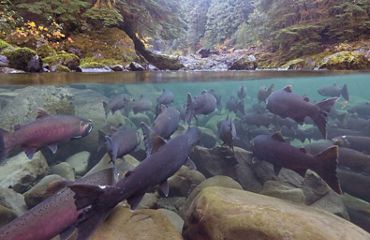
What happens at the top of the mountain has a direct impact on the estuary. When you have a healthy forest, healthy river, healthy water, you have healthy salmon, healthy people.
Local studies show that, by protecting and restoring 17% of these key watersheds, 90% of freshwater salmon productivity can be protected. To achieve this, the Nations aim to protect more than 65,000 hectares of forests against further industrial forestry activity, which will safeguard the remaining old-growth forests and allow other parts of the forest to return to old-growth stands. These stands will greatly increase carbon storage by building up thick layers of humus – the layers of decaying plant matter that accumulate as a forest grows and stores more carbon. As they do this, the forests also help to regenerate the interconnected salmon habitats.
Stories like this prove how, when resource managers take carbon storage into account, there are so many interconnected benefits. Restoring old-growth forests will take hundreds of years, but we must start today.
“Forestry isn’t Rocket Science. It is Much More Complicated.”
This quote, from forestry expert Professor Fred Bunnell in 1999, reflects the complexity of striking the right balance of forest management techniques. All forests are different. And this diversity is important. All forests have value in our fight to end the climate crisis and increase biodiversity outcomes, while providing sustainable local livelihoods and resources for communities.
By investing in the oldest carbon-capture technology ever invented – photosynthesis – nature itself can help reduce Canada’s emissions. The restoration of forest cover is key to ensuring this happens, and the great news is that the longer we keep these techniques up, the more effective they will become. Our research shows that, if we maximize this approach now, restoration of forests over millions of hectares is possible and can yield up to 25 MT of annual emissions reductions after 30 years of implementation.
Improved Forest Management is Just One Tool in our Toolbox
Nonetheless, it’s a crucial one. Because Canada's forests have the potential, if managed more effectively, to sequester huge amounts of carbon.
We need to urgently advance a new vision for how forests across Canada are managed. We need to move towards a future where carbon capture is a priority, and the forest industry and communities are supported in the transition. A future where Indigenous communities are leading improved forest management. A future where we are achieving the right results for people and the planet.
Join us in our mission to work with nature as a powerful tool in our fight against climate change.
Sign up for monthly updates on how to support a thriving, sustainable economy not only for Canada, but for the world.


